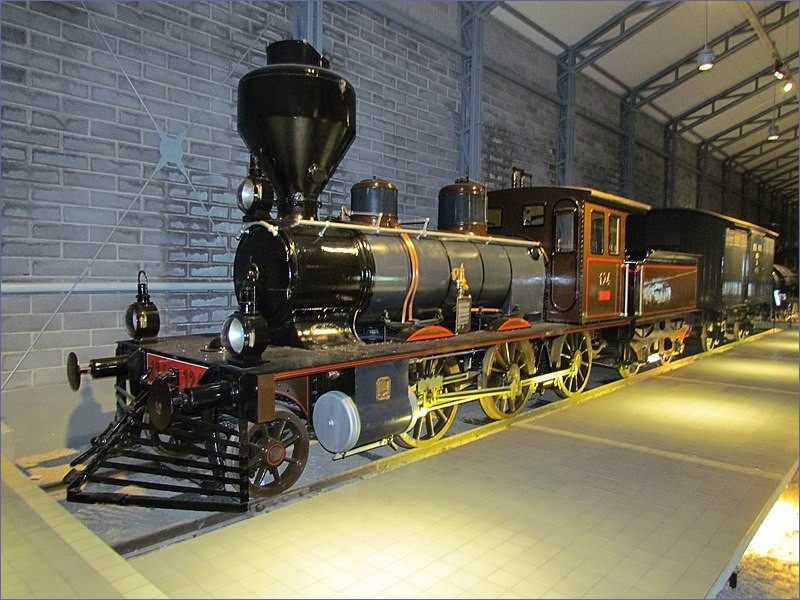Finland has about 5,926 kilometres of railways in use, of which 3,330 kilometres are electrified lines. The rail gauge of the Finnish rail network is 1524 mm – Russian gauge, because the first railway lines in Finland were constructed at time, when Finland was part of the Russian Empire and Russia had to ensure connection with the rest of the Russian network.
Last updated: 10.06.2025
Train travel in Finland – domestic trains
Finland is sparsely populated country. Railway network is well developed and well maintained. Finnish rail network consists mainly of single-track lines. Trains connect main cities and many villages located along railway lines. Most important railway junctions are Helsinki, Seinäjoki, Tampere and Kouvola. The train is a very popular means of transport among Finns and tourists. Sometimes you will need to combine multiple modes of transport – you can first travel by train and then continue your journey on a local bus.
Passenger trains are operated by state-owned company VR Group. Tickets are expensive, but VR has many promotional offers enabling the purchase of cheap tickets. If you want to travel by long-distance trains for several days, Interrail or Eurail is a good choice.
vr.fi – trip planner, online shop, additional information.
Railway map of Finland (Wikimedia Commons)
junalahdot.fi – train schedules in real time
Train travel in Finland is very comfortable. Rolling stock for-long distance services is modern, eco-friendly, with playrooms for children and vacuum toilets.
Related articles:
Ukko-Pekka steam train – a general overview
Former railway station at Malmi cemetery
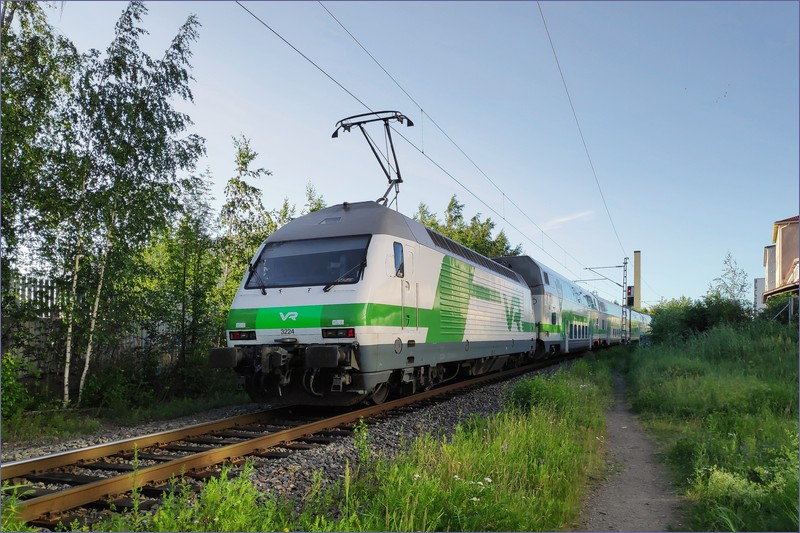
Train travel in Finland – the best offers
If you want to explore Finland by train, there are two useful network tickets:
1) Finnish Railways (VR) offers a seasonal network ticket that makes train travel across Finland more affordable. The network ticket, called “Lomalippu” (Holiday Ticket), allows unlimited travel on VR-operated long-distance and regional trains for 7, 9, 14, or 30 consecutive days between May 26 and August 31, 2025. Tickets will be available for purchase until August 10, 2025.
Lomalippu/Holiday ticket – a passenger’s guide
2) Interrail One Country for Finland is significantly much expensive but there is no limit to the summer months.
Types of the trains in Finland:
Commuter trains – suburban trains in areas from Helsinki to Lahti, Kouvola, Kotka Harbour and via Riihimiäki, all the way to Nokia. Also H train to start operating between Hanko and Karjaa. Electric train, mostly modern but there are also old Sm2 electric multiple units (not accessible for disabled people and not equipped with air-conditioning). No seat reservation is required. Commuter trains run often and nearly round the clock. Passengers on commuter trains can bring their bikes on the train free of charge, without prior reservation.
Regional – diesel multiple units for shorter routes between population centres on non-electrified routes. They provide convenient further connections for the InterCity and Pendolino trains. All trains were produced by Czech company ČKD Vagonka, the maximum speed is 120 km/h. Regional trains have wheelchair spaces and wheelchair lifts, vacuum toilets, space for prams and bikes.
Regional trains run on the following routes:
Pieksämäki – Joensuu – Nurmes
Iisalmi – Ylivieska
Savonlinna – Parikkala
Tampere – Keuruu
Jyväskylä – Seinäjoki
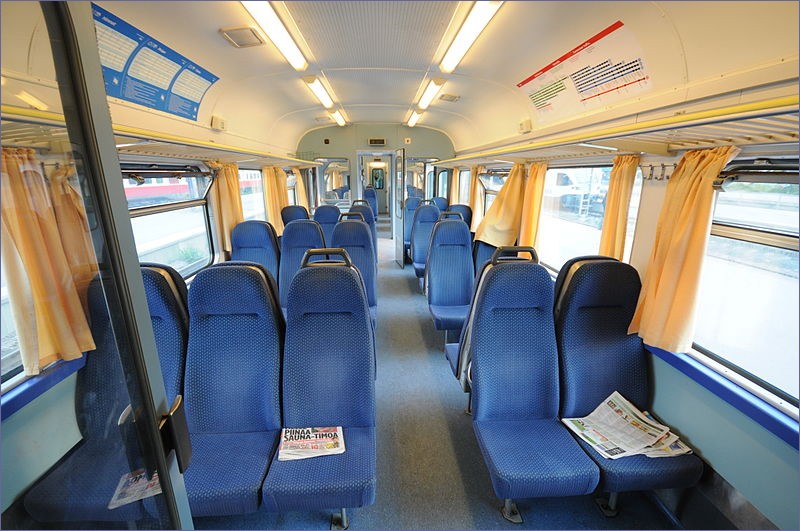
Intercity – most common type of long-distance trains. The InterCity train compositions vary. Mostly are comprised of double-decker coaches with Eco class and Extra class. The maximum speed of InterCity trains is 200 km/h. During the journey you can buy something to eat in a restaurant car or from sales trolley. Most coaches are equipped with air-conditioning. Some coaches have designate seats for passengers travelling with pets, two-person and four-person compartments in mezzanine. Trains are equipped with coin return lockers for baggage, skis and snowboards (there are overhead racks an unlocked luggage racks), family cabins and playrooms for children.
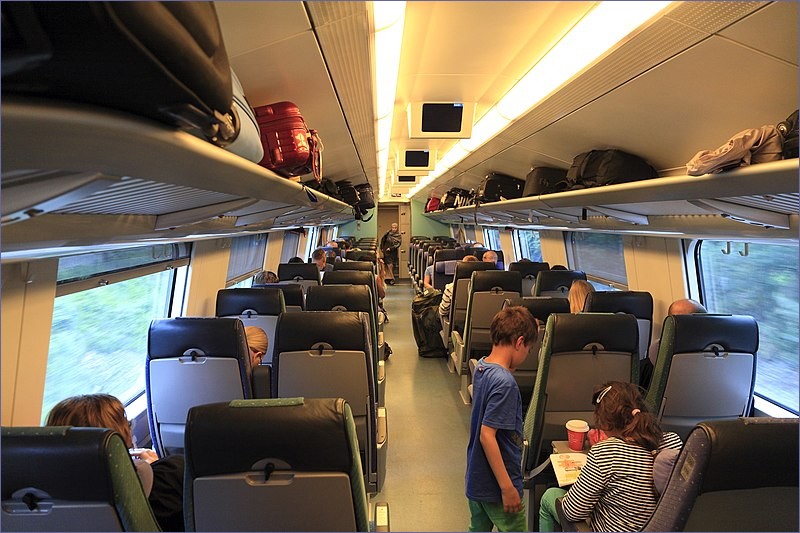
Pendolino (“S” in timetable) – single-level trains with Eco class and Extra class coaches. In addition there is a restaurant car. The speed limit for Pendolino trains in passenger service is 220 km/h. The first Pendolino route in Finland from Helsinku to Turku was inaugurated on 27 November 1995. Pendolino trains are sometimes replaced by InterCity trains. The 14 trainsets are currently in use. Pendolino trains are air-conditioned.
Most popular long-distance routes:
Helsinki – Turku
Helsinki – Vaasa
Helsinki – Lahti
Helsinki – Rovaniemi
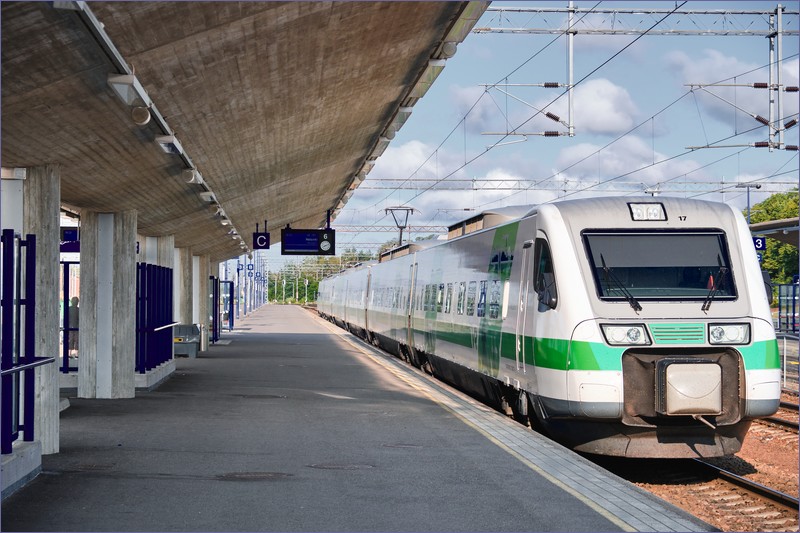
Overnight trains
Overnight trains in Finland connect the south and the north of the country. Trains run from Helsinki to Rovaniemi, Kolari and Kemijärvi. Tracks don’t reach many popular destinations in the north of Finland and you will need to continue your journey to final destination by local bus, taxi or rented car. You can also take your car with you on a night train in car-carrier.
Finnish night trains have seating carriages, sleeping carriages and carrages for transport of cars. Sleeping carriages are modern, air-conditioned double-decker. Cabins are for 1–2 or 1–3 people and have bunk beds. Duvets, pillows and sheets are provided. The downstairs cabins are cheaper than upstair, but showers and toilets are common – situated along the aisles. Upstair cabins which have a private shower and toilet. You can also select an adjoining downstairs cabin (2 + 2 persons), with a partition that can be opened.
There is a restaurant car on each night train that serves you until 2 a.m. and reopens in the morning at 4 a.m. You can order a breakfast package to your cabin. Meals and breakfasts are expensive and prices include service fee.
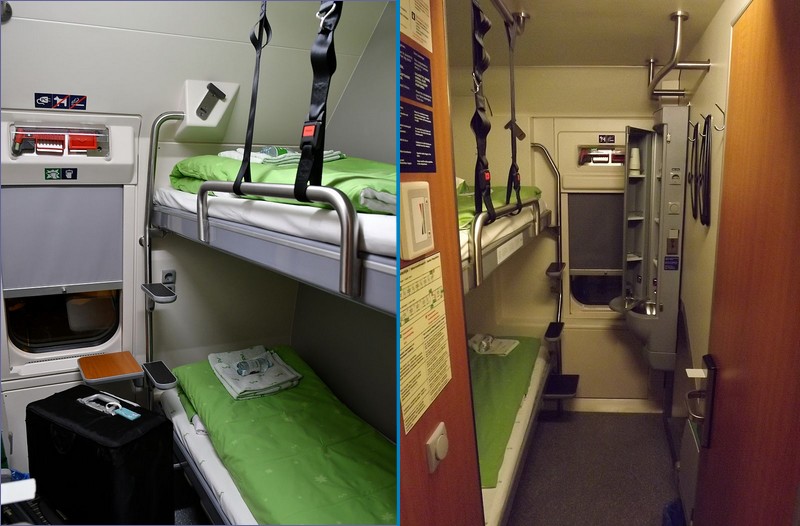
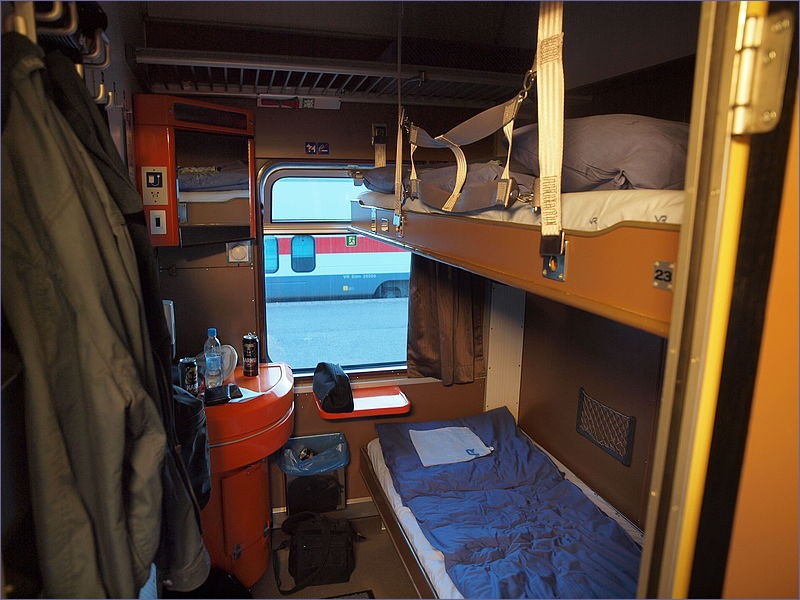
Train travel in Finland – international trains
The Finnish rail network is connected to Sweden via Tornio, and to Russia via Vainikkala, Imatrankoski, Niirala and Vartius.
There are no international train to Sweden. Information about international trains from Sweden to Finland going to start in a short period of time has been appearing in the media for many years. But the trains didn’t run.
There were daytime trains from Helsinki to Sankt Petersburg brand-named “Allegro” and overnight train from Helsinki to Moscow. All passenger trains to Russia were ceased shortly after Russia invaded Ukraine. There are no plans to reinstated trains between Finland and Russia.
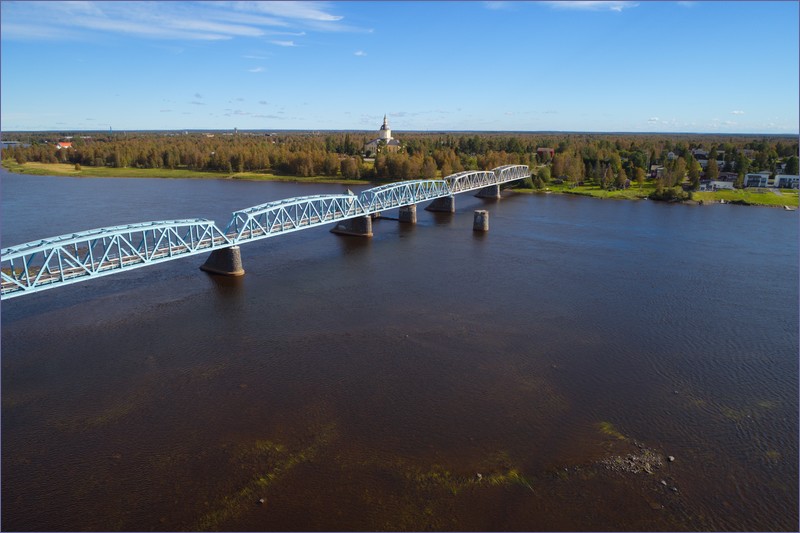
History of the railway in Finland in brief
The first railway in Finland was opened on 31 January 1862 between Helsinki and Hämeenlinna (96 km). First scheduled train made his journey on 17 March 1862.
In 1870 the railway line between Riihimäki (a station on the Helsinki–Hämeenlinna line) to Sankt Petersburg was completed. The line opened in September 1870 was 371 km in length.
In October 1873 was opened the first privately financed railway line in Finland between port of Hanko to Hyvinkää (153 km). The line went bankrupt in 1875 and the Finnish government bought the railway.
Following year was completed the second privately financed railway from Porvoo to Kerava (33 km). In 1917 the company which manage the line, was sold to the Finnish state railways. Passenger traffic on this line was suspended in 1981, currently the line is used mainly for heritage trains in summer season.
In 1913 a bridge built in Russia over the Neva river connected the Finnish rail network to the rest of the Russian network.
The network continued to expand to 1917.
Jokioinen Museum Railway
Jokioinen Museum Railway is the only remaining continuously operated narrow gauge railway in Finland. Scheduled trains run on the 14 km Humppila – Minkiö – Jokioinen railway on Sundays and Saturdays in July and September. Heritage train is hauled by steam locomotive and has old-style carriages with wooden benches. The train passes green fields, pastures and forest.
The railway was the second privately-owned narrow gauge railway opened for common carrier services in Finland. The 23 km long railway line from Humppila to Forssa was opened on 9 December 1898. The scheduled passenger services began in October 1899. In 1930 railbuses were put into use on the railway. Railway lost competition with road transport and the passenger trains were ceased in 1954. In 1974 the line was closed for freight traffic. Next year, the tracks between Forssa and Jokioinen (9 km) were dismantled.
In the summer 1978 steam trains began running on the Jokioinen Museum Railway between Jokioinen and Minkiö. In 1994 the line was extended from Minkiö to Humpilla (8 km).
jokioistenmuseorautatie.fi – Official website
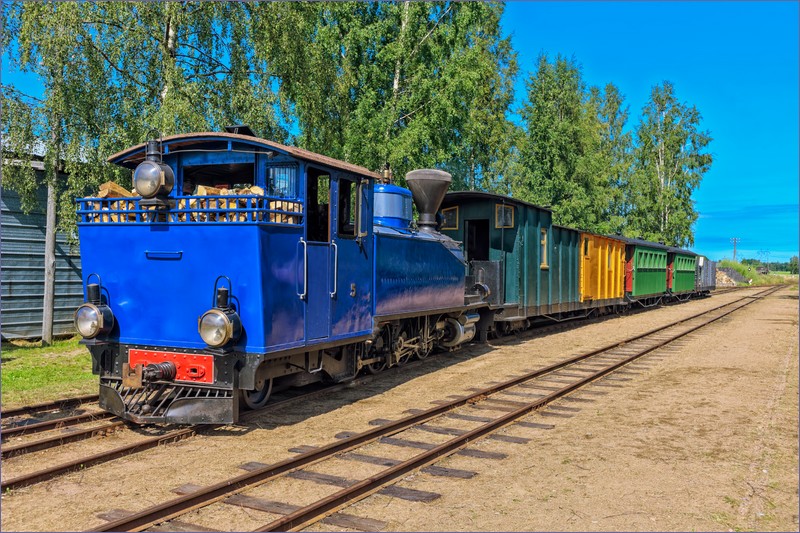
Railway Museum in Hyvinkää
If you are a railfan, you must visit Finnish Railway Museum in Hyvinkää, about sixty kilometres from Helsinki. The museum was oryginally located in Helsinki, but was moved to Hyvinkää in 1974.
The museum displays the history of Finnish railways from their beginning until the present day. The museum is housed in the original station and yard site of the Hanko – Hyvinkää railway, a former private line built in the 1870s. The exhibition halls and engine roundhouse contain rolling stock – steam locomotives, diesel locomotives, draisines, old passenger and freight carriages, even restored Russian Imperator’s train.
In the summer season there is a miniature train in the museum area.
Tickets are inexpensive.
Train travel from Helsinki to Hyvinkää lasts about 40 minutes.
Official website: rautatiemuseo.fi
